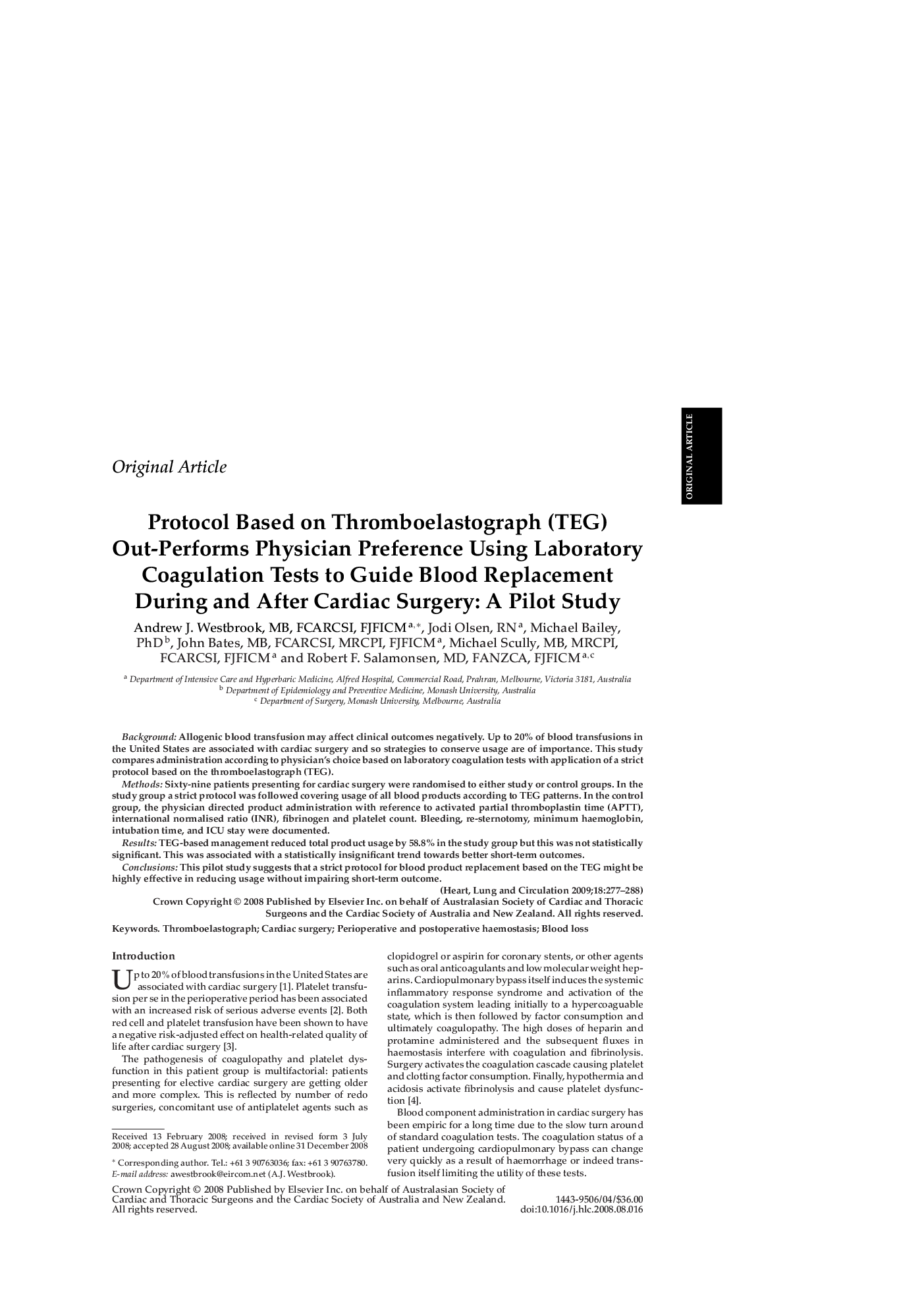| Article ID | Journal | Published Year | Pages | File Type |
|---|---|---|---|---|
| 2921230 | Heart, Lung and Circulation | 2009 | 12 Pages |
BackgroundAllogenic blood transfusion may affect clinical outcomes negatively. Up to 20% of blood transfusions in the United States are associated with cardiac surgery and so strategies to conserve usage are of importance. This study compares administration according to physician's choice based on laboratory coagulation tests with application of a strict protocol based on the thromboelastograph (TEG).MethodsSixty-nine patients presenting for cardiac surgery were randomised to either study or control groups. In the study group a strict protocol was followed covering usage of all blood products according to TEG patterns. In the control group, the physician directed product administration with reference to activated partial thromboplastin time (APTT), international normalised ratio (INR), fibrinogen and platelet count. Bleeding, re-sternotomy, minimum haemoglobin, intubation time, and ICU stay were documented.ResultsTEG-based management reduced total product usage by 58.8% in the study group but this was not statistically significant. This was associated with a statistically insignificant trend towards better short-term outcomes.ConclusionsThis pilot study suggests that a strict protocol for blood product replacement based on the TEG might be highly effective in reducing usage without impairing short-term outcome.
